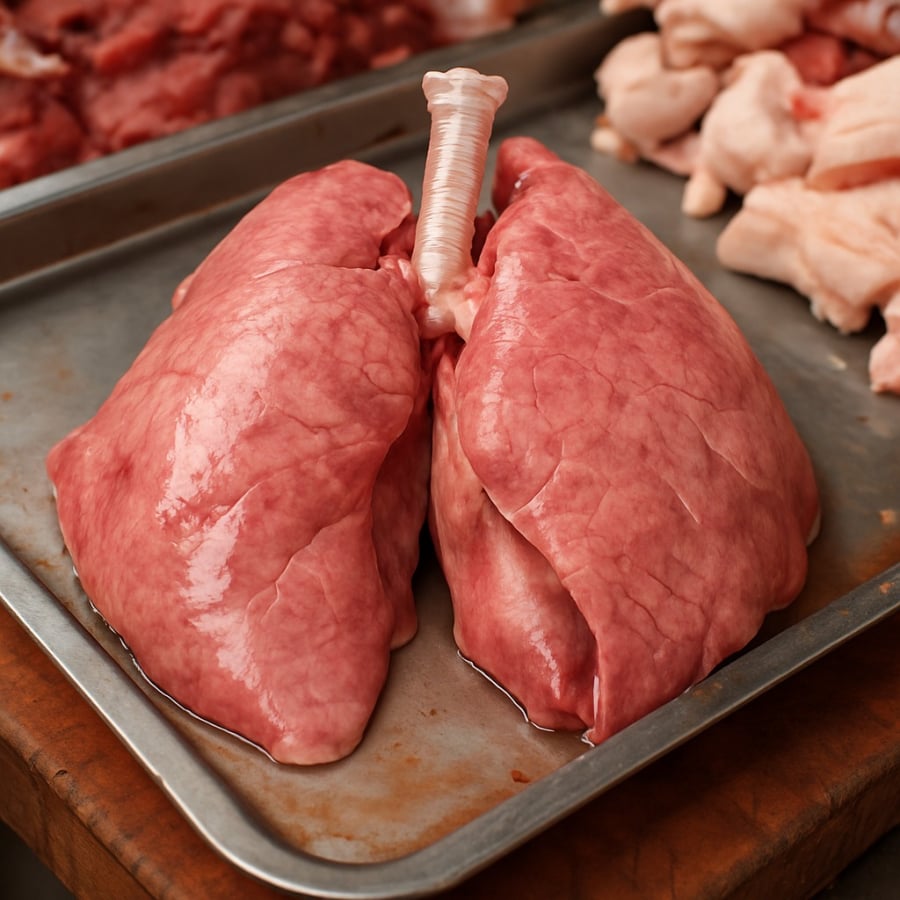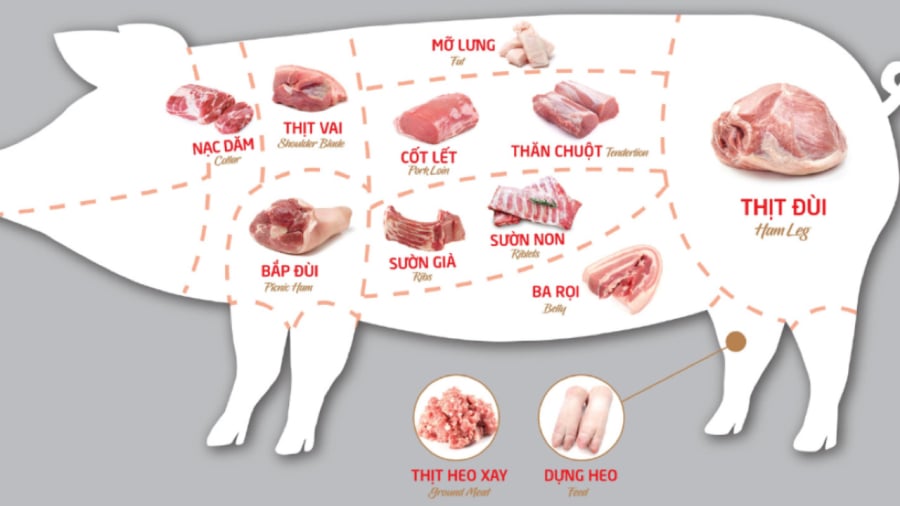While some animal organs and parts may seem harmless, they can pose serious health risks if consumed regularly or improperly handled.
1. Pig Lungs – Stay Away from These Toxin Filters

Particularly, pigs raised in polluted environments or without proper care may have lungs laden with harmful substances, including heavy metals and pathogenic microorganisms.
Even with thorough cooking, lungs can still pose respiratory and digestive hazards, especially if not cleaned properly. Therefore, despite their low price, consumers should refrain from including pig lungs in their daily meals.
2. Small and Large Intestines – Breeding Grounds for Parasites and Bacteria
Pork intestines are a delicacy for many, but if not thoroughly cleaned, they can harbor dangerous bacteria such as E. coli, Salmonella, and parasites. This risk is heightened at street-side eateries that often use cheap, questionable sources for their ingredients.
Additionally, the fat surrounding the intestines contains high levels of bad cholesterol, which can lead to elevated blood cholesterol and hypertension with regular consumption. Indulge in this dish only when you have full confidence in the source and hygiene practices of the preparation process.
3. Pig Liver – A Reservoir of Toxins
The liver is a vital organ for detoxification in pigs, and as such, it accumulates a significant amount of toxins. If the pig is sick or fed growth promoters, chemicals, or antibiotics, the liver absorbs most of these harmful substances.
While liver is rich in iron and vitamin A, consuming it from unknown sources can lead to food poisoning, digestive issues, and potential long-term damage to the liver and kidneys.
4. Pig Brain – High in Cholesterol, Low in Nutrition
Contrary to the belief that pig brain boosts brain health, it is primarily composed of saturated fat and bad cholesterol. A 100g serving can contain up to 2000mg of cholesterol, far exceeding the daily recommended intake.
Regular consumption can increase the risk of obesity, atherosclerosis, stroke, and cardiovascular disease, especially in the elderly and those with pre-existing conditions.

5. Stomach – Prone to Bacteria and Hard to Clean
Pork stomach is commonly used in dishes like salads, boiled or steamed dishes, but it often contains partially digested food, mucus, and bacteria. Without proper cleaning using ingredients like lemon, salt, or vinegar, the risk of bacterial infection is significant.
Additionally, the stomach can easily be contaminated by unsafe animal feed. Unless you are confident about the source and have the expertise to clean it thoroughly, it is best to avoid this part.
Just because something is cheap doesn’t mean it’s a good buy, especially when it comes to pork organs and toxin-prone parts. Choosing safe food is not only about protecting your health but also that of your family. Opt for leaner cuts like loin, tenderloin, or belly from reputable sources, and limit your consumption of pork organs to minimize potential health risks.



































